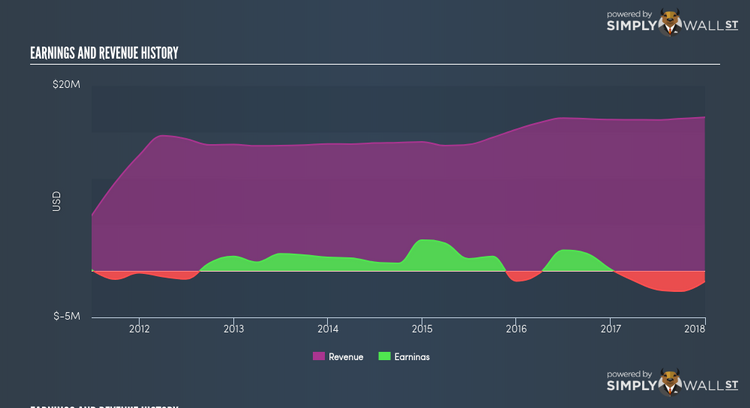Does Optibase Ltd’s (NASDAQ:OBAS) CEO Salary Reflect Performance?

Amir Philips took the helm as Optibase Ltd’s (NASDAQ:OBAS) CEO and grew market cap to US$45.89M recently. Understanding how CEOs are incentivised to run and grow their company is an important aspect of investing in a stock. Incentives can be in the form of compensation, which should always be structured in a way that promotes value-creation to shareholders. Today we will assess Philips’s pay and compare this to the company’s performance over the same period, as well as measure it against other US CEOs leading companies of similar size and profitability. See our latest analysis for Optibase
What has been the trend in OBAS’s earnings?
Earnings is a powerful indication of OBAS’s ability to invest shareholders’ funds and generate returns. Therefore I will use earnings as a proxy of Philips’s performance in the past year. In the past year, OBAS produced negative earnings of -US$1.12M , compared to the previous year’s positive earnings. Additionally, OBAS hasn’t always been loss-making, with an average EPS of US$0.13 over the past five years. In the situation of negative earnings, the company may be going through a period of reinvestment and growth, or it can be a signal of some headwind. Regardless, CEO compensation should mirror the current condition of the business. From the latest financial statments, Philips’s total remuneration increased by 23.55% to US$361.00K. Furthermore, Philips’s pay is also made up of 10.25% non-cash elements, which means that variabilities in OBAS’s share price can move the real level of what the CEO actually receives.
Is OBAS overpaying the CEO?
Even though no standard benchmark exists, as compensation should account for specific factors of the company and market, we can determine a high-level benchmark to see if OBAS is an outlier. This exercise can help shareholders ask the right question about Philips’s incentive alignment. Generally, a US small-cap has a value of $1B, creates earnings of $96M, and remunerates its CEO circa $2.7M per year. Normally I’d use market cap and profit as factors determining performance, however, OBAS’s negative earnings lower the effectiveness of this method. Looking at the range of compensation for small-cap executives, it seems like Philips is remunerated sensibly relative to peers. On the whole, though OBAS is unprofitable, it seems like the CEO’s pay is sound.
Next Steps:
In order to determine whether or not you should invest in OBAS, your thesis should be built on fundamentals. Even though CEO pay isn’t technically a key concern, it could serve as an indication as to how board members align incentives and how they think about setting policies. These issues directly impacts how OBAS makes money, and factors impacting your return on investment. If you have not done so already, I highly recommend you to complete your research by taking a look at the following:
Governance: To find out more about OBAS’s governance, look through our infographic report of the company’s board and management.
Financial Health: Does it have a healthy balance sheet? Take a look at our free balance sheet analysis with six simple checks on key factors like leverage and risk.
Other High-Growth Alternatives: Are there other high-growth stocks you could be holding instead of OBAS? Explore our interactive list of stocks with large growth potential to get an idea of what else is out there you may be missing!
To help readers see pass the short term volatility of the financial market, we aim to bring you a long-term focused research analysis purely driven by fundamental data. Note that our analysis does not factor in the latest price sensitive company announcements.
The author is an independent contributor and at the time of publication had no position in the stocks mentioned.

